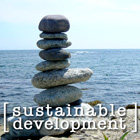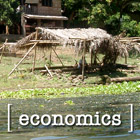
|
NORWAY TO BUILD ARCTIC SEED BANK FACILITY WILL STORE SAMPLES OF ALL KNOWN CROP VARIETIES 18 January 2006 The Norwegian government has announced plans to create a global seed bank, to be located in the nation's arctic subsoil, to preserve all world crop varieties against extinction, should any number of natural disasters strike. The seed bank will be located inside a frozen mountain on the island of Spitsbergen, in the Svalbard archipelago in the Arctic Ocean. To be completed in 2007, the facility will be designed to provide a failsafe against overdependence on monocultural cropping and harvesting in the human food supply. Political instability can also threaten crop diversity, as the national seed banks of Afghanistan and Iraq have been reportedly destroyed by recent wars. So the project has come to be known as a "doomsday" store of seeds for restoring agriculture possibly after a human-induced disaster. An estimated 1,500 seed-banks exist worldwide, largely to promote study and to protect the diversity of crop varieties, an important tool for protecting against overdependence and collapse of a region's food supply. Many developing countries will be able to take advantage of the free service provided by the Svalbard seed bank. One of the most famous examples of such a catastrophe was the 19th century Irish potato famine. Economic and agricultural policies led to a perilous monoculture, where one form of potato was grown across the island, and soils were eroded and left less fertile. When the Blight —a crop-born fungus— struck the potato crop, the food supply of the nation collapsed. Between 1846 and 1851, an estimated 1 million people died and as many as 2 million emigrated to Great Britain, the US, Canada and Australia. Memories of the Great Hunger still burn in Irish national identity and cultural lore. The seed bank would also provide a resource for nations looking to diversify their traditional crop range or which would like to introduce new crops favorably suited to their environments. For instance, one variety of rice or coffee might be better suited to dryer conditions, and so would benefit a country experiencing new or persistent levels of drought. The Svalbard location would depend in part on the island's permafrost, beneath which the storage facility would be situated. New studies show that permafrost across the arctic may be in jeopardy, at least at surface levels, and there is spreading evidence that the Arctic Ocean may soon be open water in summer. The Global Crop Diversity Fund will oversee the collection of seed samples, their categorization and storage. The Fund boasted a $50 million endowment as of late 2004, and had another $60 million coming in 2005. The Fund was created in part due to a study by Jeffrey Waage, a researcher in the UK, which showed that of the 1,500 crop banks holding some 6 million samples as of the mid-1980s, many were in danger of failing to preserve key samples. As few as 30 to 40 may meet international standards for long-term security and preservation. The Svalbard seed bank will be the culmination of a global effort to ensure that the harvest for the human food supply retains as much genetic diversity, so it can be best adapted to future challenges and/or threats. [s] |
|||||||||||||||||
|
||||||||||||||||||







